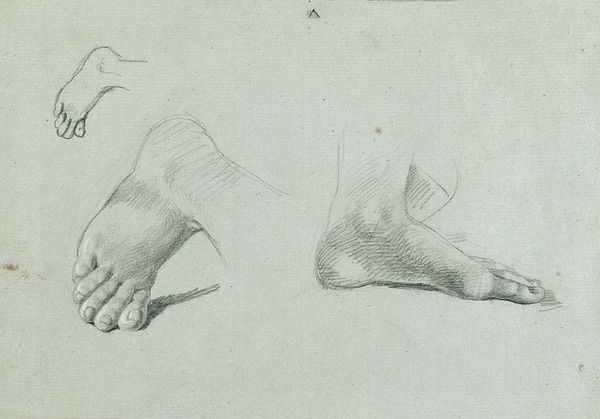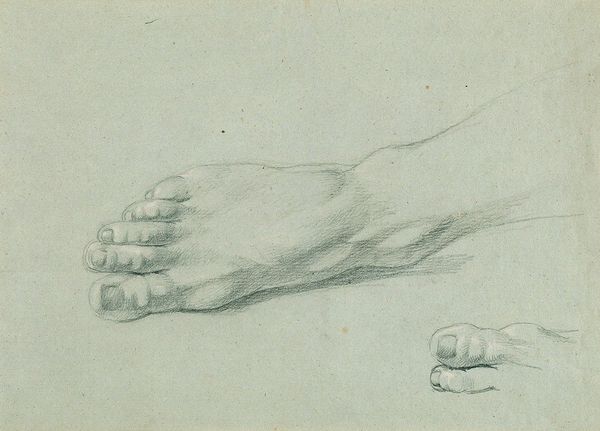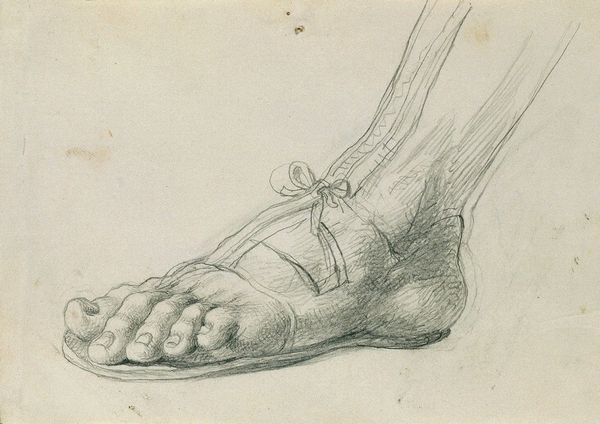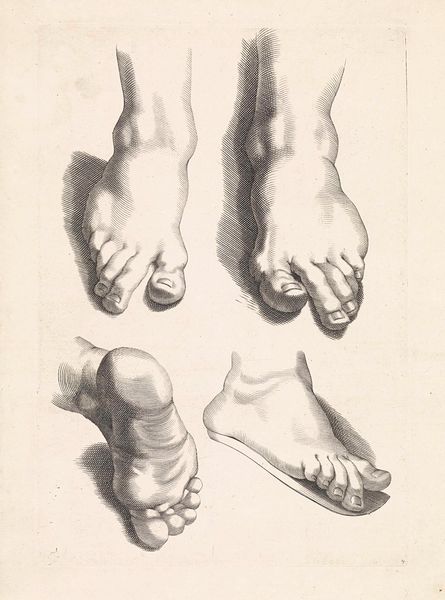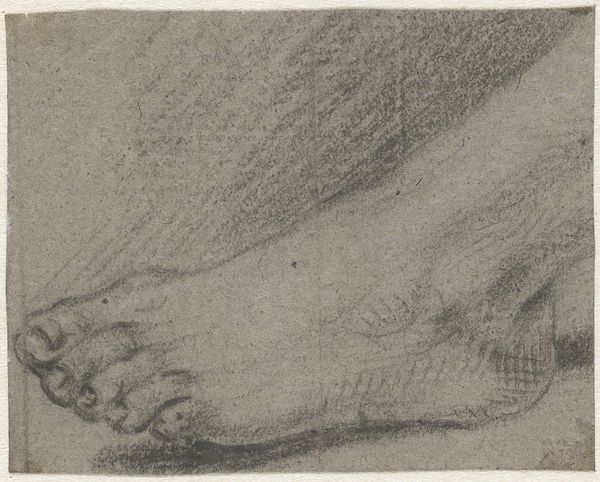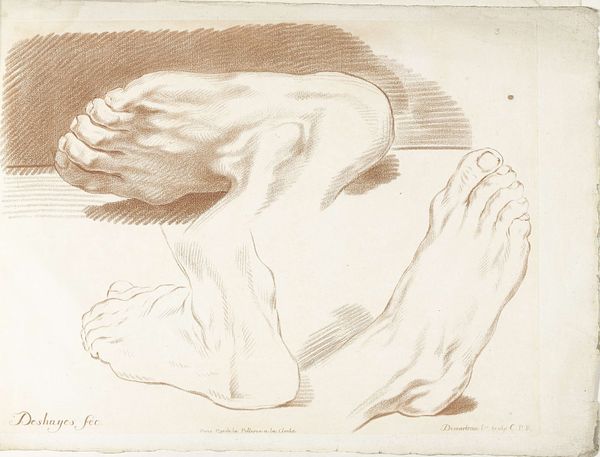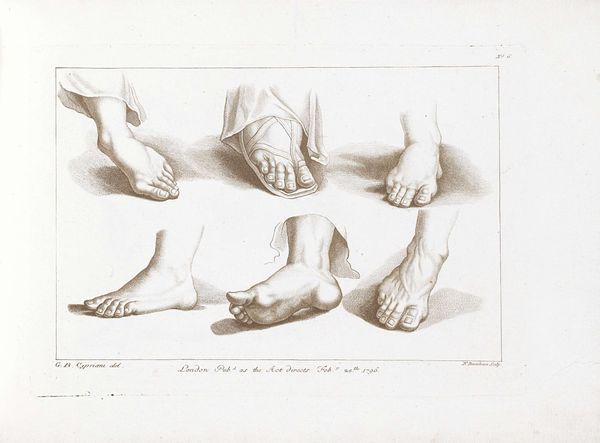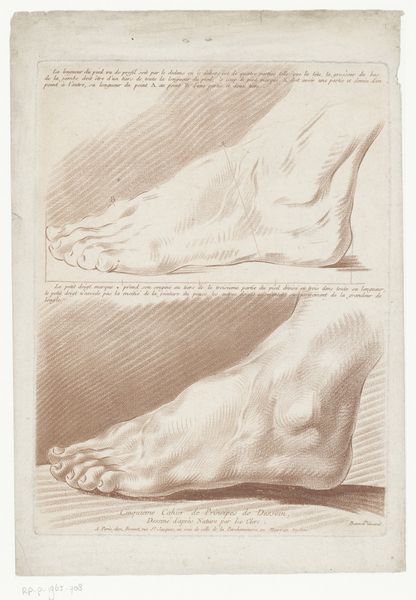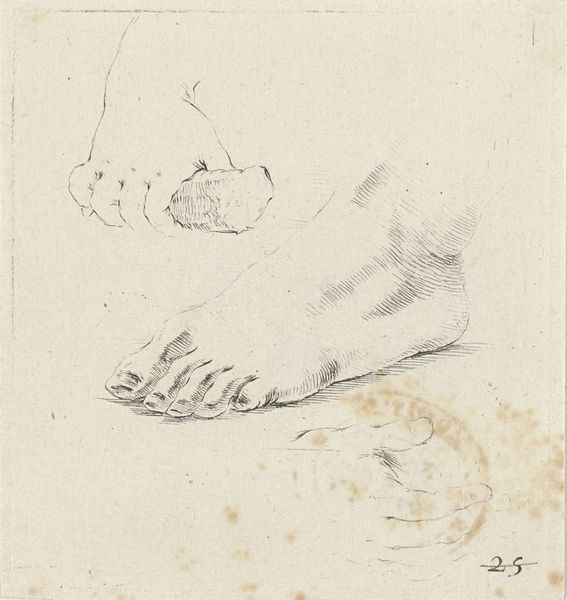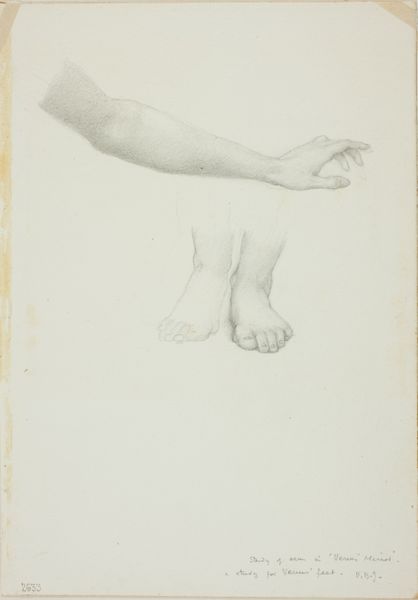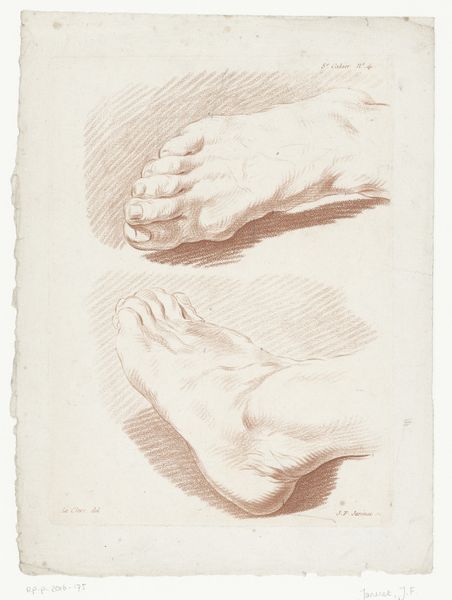
drawing, paper, ink
#
portrait
#
drawing
#
pencil sketch
#
mannerism
#
figuration
#
paper
#
ink
#
pen-ink sketch
#
academic-art
Dimensions: height 124 mm, width 152 mm
Copyright: Rijks Museum: Open Domain
Curator: The artwork before us, "Vijf voeten," created by Stefano della Bella between 1620 and 1664, is a remarkable example of the artist's skill with ink on paper, now held in the Rijksmuseum. Editor: It strikes me immediately—the focus on isolated forms, almost clinical in their presentation, yet undeniably elegant in the lines themselves. The interplay of light and shadow achieved with simple hatching is quite captivating. Curator: Precisely. Della Bella was working within a context of artistic patronage. Drawings like these served multiple purposes, from acting as preparatory sketches to independent works marketed to collectors and other artists, and "Vijf voeten" offered access to studying human anatomy at a time when such access was carefully managed. The “Avec privilege du Roy” suggests also the king's support. Editor: The economy of the lines is impressive. Note how much he conveys with so few strokes, giving substance and dimensionality to a subject one might find quite…mundane, otherwise. This piece is a pure investigation into form and texture. Curator: It also subtly reveals shifts in aesthetic and political preferences. There was a market for anatomical studies driven both by scientific curiosity and by artistic training models within established academies. That also signals a subtle shift from the emphasis of religion to science within Europe. Editor: But is it really *about* that shift? Doesn't the drawing's emphasis on idealized, rather than purely anatomical, correctness signal a continuing dialogue with mannerist ideals, not merely scientific rationalism? Even something as apparently simple as these feet suggests layers of formalism. Curator: You have a point. The art world constantly grapples with reconciling academic structures and ideals. The artist always had to walk the line. This sketch really shows that dynamic at play. Editor: So, in viewing this artwork, one should remember not just historical forces and royal privileges, but the formal exercise itself—how it employs ink to bring life to a handful of toes. It offers us a direct view into how an artist makes artistic choices and renders human forms. Curator: A reminder, ultimately, that art always occupies both the realm of ideas and real human concerns. Editor: And that feet can, indeed, be beautiful.
Comments
No comments
Be the first to comment and join the conversation on the ultimate creative platform.
